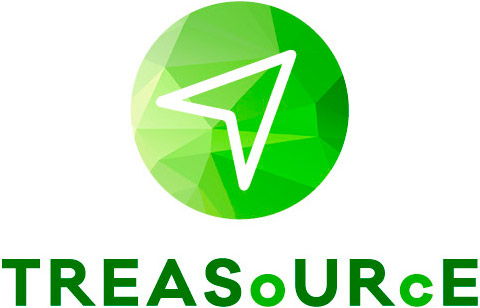In TREASoURcE, we are working on devising environmentally friendly approaches to tackle the plastic problem. Plastic waste being one of the project’s Key Value Chains, we are looking at the overall circularity of different plastic waste types, starting from collection to pretreatment and recycling. As a wide variety of plastic types is needed to serve different purposes in our everyday lives, classifying plastic waste into categories has been a favourable starting point for our research. Municipal, agricultural, and industrial plastic waste are the three main categories that we are investigating.
Looking at the municipal waste for instance, we wanted to have a better understanding of how municipal plastics waste types vary according to consumption habits in different regions. Two pilots have therefore been selected to support the research. The first is Tampere-Pirkanmaa region in Finland and the second Fredrikstad municipality in Norway. Plastic wastes coming from these areas are evaluated according to their availability, variety of plastic types, efficiency in collection, pretreatment and sorting, suitability for different recycling methods (mechanical or chemical recycling) and the end properties after recycling. Our work supports achieving circularity of the targeted plastic waste streams in terms of a close-loop system.
Moving away from the traditional, linear model of production and consumption habits, different regaining stages such as plastics recycling, repurposing and reusing need to be considered to form a continuous loop. While conventional industrial production processes are designed to receive standardized raw materials from virgin feedstock, used plastics form a considerably more complex, yet valuable, resource. Each plastic material is developed tailor-made according to a specific application. The same kind of packaging cannot be used for sausages, cheese, juice or shampoo, for example. Moreover, before a product reaches the consumer, it must comply with certain technical standards to meet a variety of requirements, such as shelf-life and physical endurance during its lifecycle. For this reason, additives and mixed materials are commonly used in plastics production, further diversifying the type of final products.
In short, a plastic product to be recycled differs from its raw materials in two fundamental ways: by being a mixture and having lost some of its properties during usage by consumer. Considering the complexity of plastic waste, it is important to address each type of plastic waste to suitable recycling technology and business after its end-of-life. On the other hand, utilizing recycled plastics in their original application facilitates leaner routes to maintain circularity. Therefore, not only developing the technologies for recycling are important, but also the steps before recycling are crucial. These include processes such as collection, sorting and cleaning, which eventually enable much lower energy consumption both in manufacturing and waste recovery.
In TREASoURcE, we are investigating the value chain of plastics for the selected pilots, from production through consumption to recycling, to evaluate the potential for boosting circularity, elucidate the bottlenecks and devise strategies to develop recycling technologies to eventually increase recycling rates. One of the major milestones of the project is researching the materials in plastic waste and addressing them to the most suitable recycling technology to achieve the properties that are closest to the ones of virgin raw materials. This is also particularly important for the industrial players to mitigate their raw material supply risks, considering there is a bottleneck in consistent, reliable and convenient quality recycled plastic raw material supply. Researching alternative uses and addressing the recycled plastics for suitable applications other than their original use is another part of the project objectives contributing to broadening the industrially applicable recycled feedstock.
Close-loop system helps tackling the environmental impact in many ways. Reducing plastic production from virgin raw materials is one of the biggest contributions directly suppressing oil and energy expenses in the industry, together with energy consumption in waste management. Moreover, in terms of raw material procurement and logistics, the circular plastics concept provides improved resource management and helps mitigating risks in oil and gas supply chains. Decreasing landfills, waste drainage to the oceans and microplastics are further examples of the very impactful benefits of close-loop plastic recycling.
*Source: European Parliament
28.09.2023 | Ugur Kaya (VTT), Ugur.Kaya@vtt.fi, Riina Kärki (MTK), Linda Rekosuo (EcoFellows), Christian Lindfors (VTT), Kaisa Simola (CLIC)
